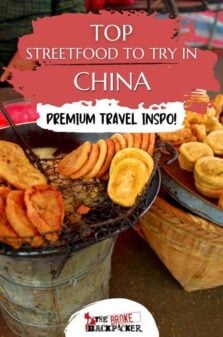China is the third biggest country in the world, and as such, its culture and culinary pallet are as diverse as it is vast.
Travelers from all over the world are lured to China to uncover the mysteriousness of its history, learn about its traditions and ways of life, and eat some of the most iconic and tastiest Chinese street food.
When it comes to food, like its geography, the country has it all. From spicy Sichuan food that comes from the rural landscapes of the North West to the tasty Xiaolongbao, or soup dumplings, from the high-rise metropolitan city of Shanghai.
There’s a huge array of food to try in China, and if you’re planning a visit, you’re going to want to know what dishes to try while you’re there.
Chinese food from China is very different from what you’re served in the US or the UK, so it’s a good idea to brush up on the best street foods in China before you travel to China and try the dishes in their homeland.

Unlock Our GREATEST Travel Secrets!
Sign up for our newsletter and get the best travel tips delivered right to your inbox.
What is Food in China like?
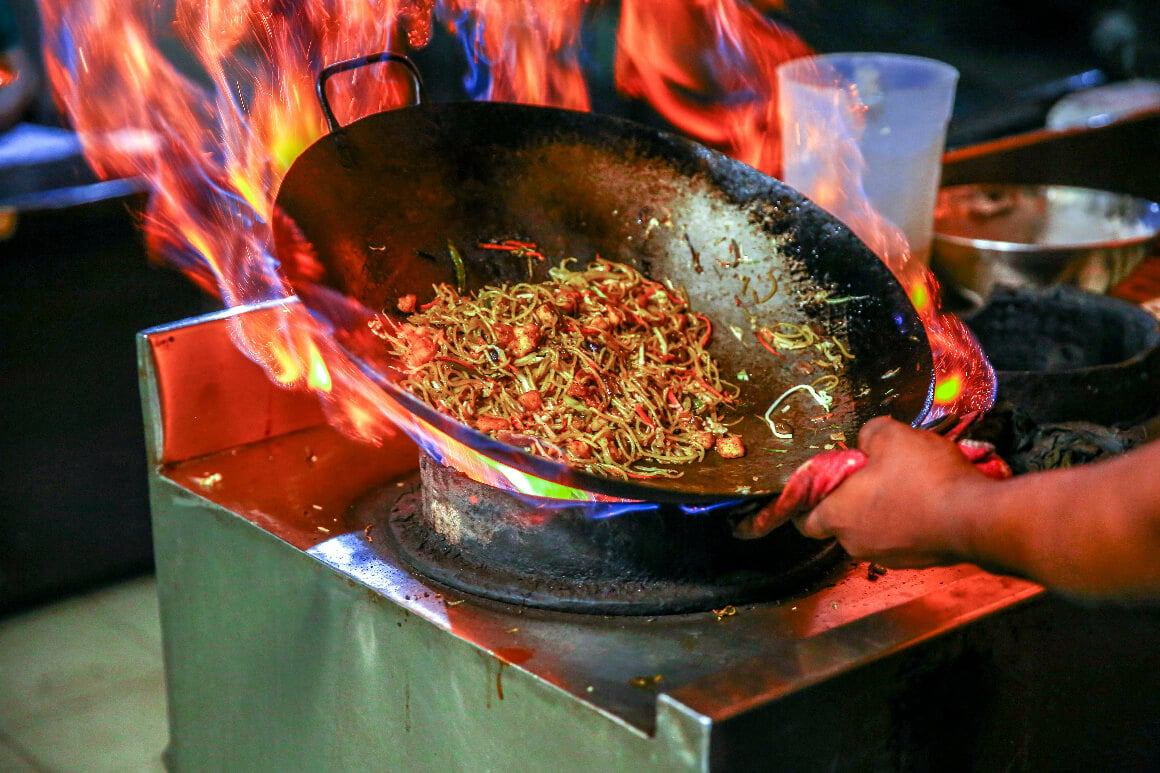
The Broke Backpacker is supported by you. Clicking through our links may earn us a small affiliate commission, and that's what allows us to keep producing free content 🙂 Learn more.
It was once said that “fashion is in Europe, living is in America, but eating is in China.” This sentence perfectly reflects how important food is in China. In fact, some traditions and customs are created around food.
In China, you eat for the health of your body, soul, and mind. It’s less about getting your five a day and more about eating in a way that restores and maintains the balance between the individual’s inner yin and yang (feminine and masculine).
The food people choose to eat in China is interlinked with their beliefs regarding health. There is a set of principles from ancient Chinese medicine that dictate how people eat and think of food. For example, the “yi xing bu xing” principle, says that any part of the animal that is eaten will replenish and strengthen the same body part in the human body.
It is also believed that crocodile meat can strengthen the bronchia and eating monkey brains is thought to increase an individual’s wisdom.
It’s important for Chinese people that every dish is prepared using fresh ingredients, like live seafood, meat, and the most seasonal fruits and vegetables. If you ever get the chance to visit a market in China, you’ll notice all animals and fish are alive until purchase, and there are different offers on different vegetables each day, depending on which is the freshest.
Each dish has to have the right balance of textures, a precise combination of spices, an eye-catching color, and a mouth-watering smell. It has to seduce all of your senses.
In each Chinese dish, there’s a focus on using four main food groups: grains, vegetables, fruit, and meat. Some of the most used grains are rice and wheat (that are used to make noodles).
It’s quite common in China for people to be lactose intolerant, so instead of using milk, many dishes use soybean or tofu instead – especially for desserts – great news for vegans!
There are also a few funky dishes – you may have seen videos on YouTube of people eating tarantula and scorpions as street food, and we’ve all heard rumors of cats and dogs being eaten – but this is just a show for tourism. Sure, you can add tasting tarantula to your Beijing itinerary, but the locals don’t snack on tarantulas, not when there’s dou sha bao (red bean buns) to be had.
China has a culture that leans towards eating out, especially in the cities where life is busy and street food is super cheap. The best meals you’ll find while backpacking China won’t be in fancy restaurants, they’ll be straight off a vendor’s cart!
Basic Dining Etiquette
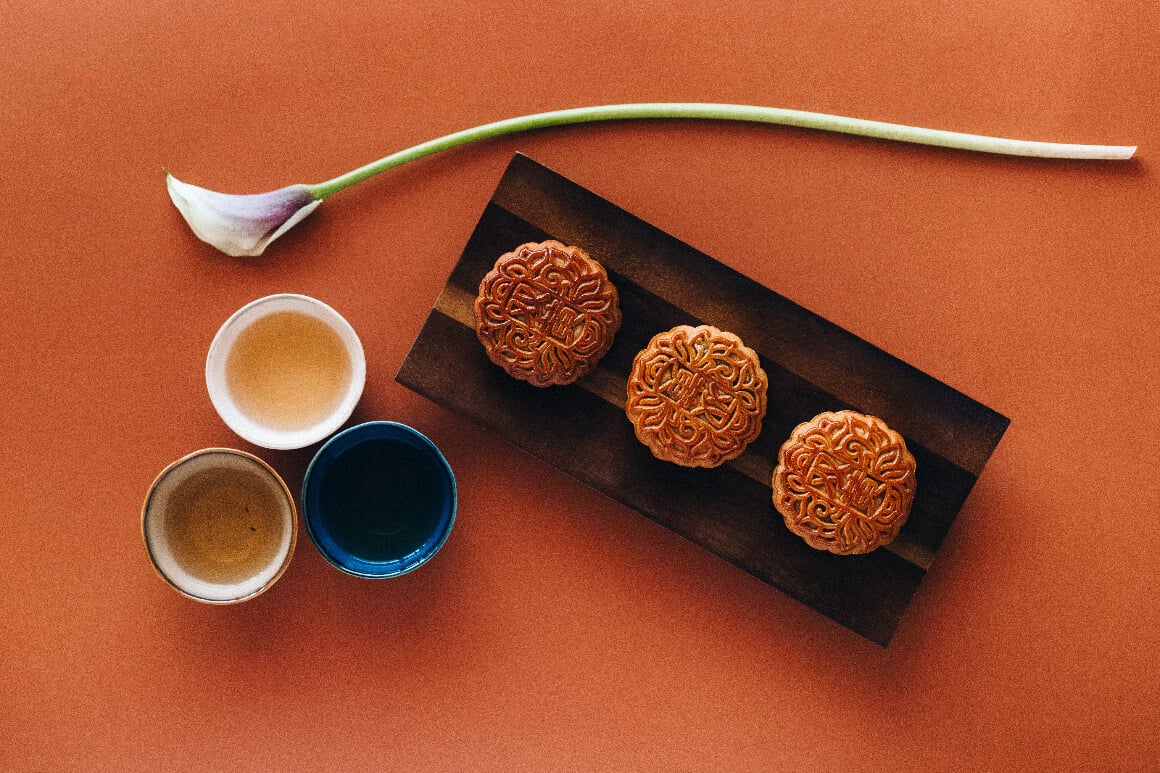
Chinese eating etiquette puts an emphasis on sharing. The dishes are put in the middle and everyone takes bits of different dishes. To make it easier, they have round tables for bigger groups.
You’ll have two pairs of chopsticks, one for eating and one for picking food off the table – this is a hygiene thing, so try to remember not to muddle them up.
You’ll also likely be given a bowl and a pot of tea and an extra pot of hot water. This is because it’s common to wash your plates and chopsticks with hot tea or hot water before eating, to kill any bacteria that might be on the dishes. The bowl is to pour the water into when you’re done washing your bowls.
At formal meals, there’s a strict table seating arrangement and it’s essential to let the host start eating first. Don’t load your plate up, opt for taking smaller portions and going back for more, and remember to chew slowly and quietly.
When you’re eating at street stalls the etiquette is much more relaxed. Some even say it’s considered a compliment to the chef to burp after a meal, but others disagree so gage the room before trying it yourself!
Chinese Street Food Across the Country
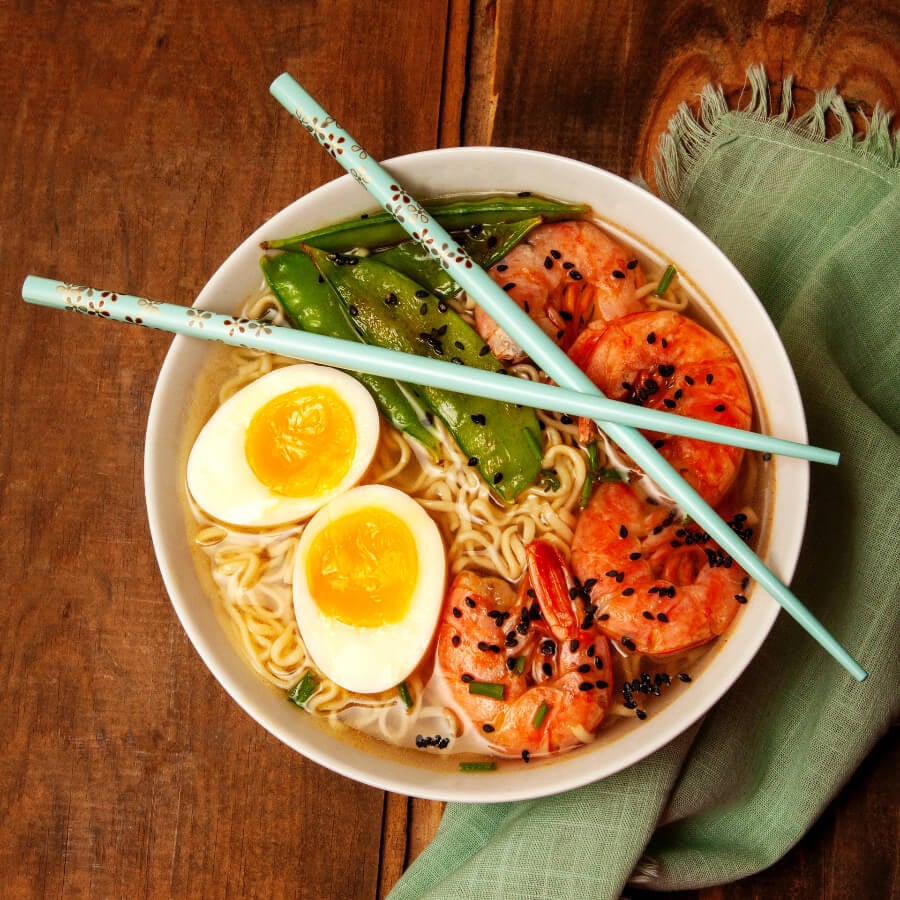
China is enormous, so logically there is great variation between each region’s local cuisine. There are some national favorites that you’ll find across the country, but in general, each area has a different selection of street foods and local specialties that taste their best in their home city or town.
Baozi (steamed stuffed buns) and jiaozi (dumplings) are great examples of a snack you can find across China, whilst other dishes are exclusively found in one region, like xiaolongbao (soup dumplings) that is local to Shanghai.
In a country that has over a billion people, 56 ethnic groups, and 26 provinces – where do you begin? Well, it has often been said that China has eight regional cuisines. Whilst this is certainly an oversimplification of the true variety of Chinese food, it’s a good place to start.
So, what are considered to be China’s “eight great cuisines”? They are the Shandong, Sichuan, Hunan, Guangdong (also known as Cantonese), Zhejiang, Jiangsu, Anhui, and Fujian cuisines.
Cantonese food, or Hong Kong food, is possibly the most renowned and famous around the world. It is characterized by incredible seafood (curried fish balls are a favorite among locals) and generally sweeter and lighter flavors. Cantonese dishes share similarities with other regional cuisines, like those in the Zhejiang and Jiangsu regions.
The best places to go to try Cantonese street foods are Hong Kong and the Guangdong Province, such as the city of Guangzhou. You’ll also be delighted by the array of dishes that Chinese street vendors and small, local restaurants sell in these regions! Make sure you try custard buns and soy-braised octopus!
For some of the most gourmet street foods head to Shanghai and the Jiangsu Province. The region is known to employ precise cooking techniques and takes pride in serving colorful dishes that are well presented.
The Zhejiang Province borders Shanghai, so there are many similarities in their culinary styles. However, there is less of an emphasis on presentation, and more importance is given to preparing fresh meals that are seasonal and only lightly cooked (almost raw at times).
Shandong cuisine has a rich variety of seafood dishes too, but it is better known for its salty and fresh flavors. If you’re looking for spice then the Sichuan and Hunan regions will have your favorite cuisine, but if chilly isn’t one of your things then stay away!
The Angui and Fujian regions are unique because their cuisine uses a variety of wild foods that are harvested from the mountains. Fujian cuisine also boasts mouth-watering seafood dishes and marvelous soups.
Remember, whatever region of China you’re in, street food is always the most authentic cuisine!
Chinese Food Festivals

China has seven major festivals a year, from Chinese New Year (or Spring Festival), Mid-autumn Festival and the Lantern Festival. While these are not festivals solely about food, they do play a big part in the celebration.
All festivals in China work around the Lunar Calendar, so it’s never the same day each year. Usually, the Chinese New Year happens around the end of January and the beginning of February.
During Chinese New Year, as well as giving red packets, it’s also common to give cakes as gifts. It’s also common to eat sweet rice balls (Tangyuan) on the 15th day of the festival to symbolize family togetherness. This is a sweet dessert with rice balls in a hot broth or syrup. People also eat noodles for happiness and longevity and eat glutinous rice cake for wealth.
The Dragon Boat Festival (held in June) is another important festival. As well as sharing in dragon boat races, on the fifth day of the Lunar calendar, Zongzi is eaten. These are glutinous rice dumplings stuffed with meat and vegetables, and wrapped in bamboo leaves. They are usually steamed but sometimes boiled.
For the Mid-Autumn Festival (held in September), people often give mooncakes to friends and family. The cake is a pastry stuffed with really dense red bean paste or lotus seed paste. Sometimes you can find mooncakes with an egg in the center. Mooncakes are usually only seen this time of year.
The Best Chinese Street Food
When you eat street food in China, you aren’t just treating yourself to some of the tastiest (and cheapest!) dishes on the market, you’re also tasting a bit of culture with every mouthful. There’s no better way to explore China’s regional customs than through its street food.
Everything can seem a little overwhelming and confusing when you arrive in a new country, especially somewhere as different as China!
So, here is a list of some of the best Chinese street foods around to help you get your bearings…
1. Jianbing
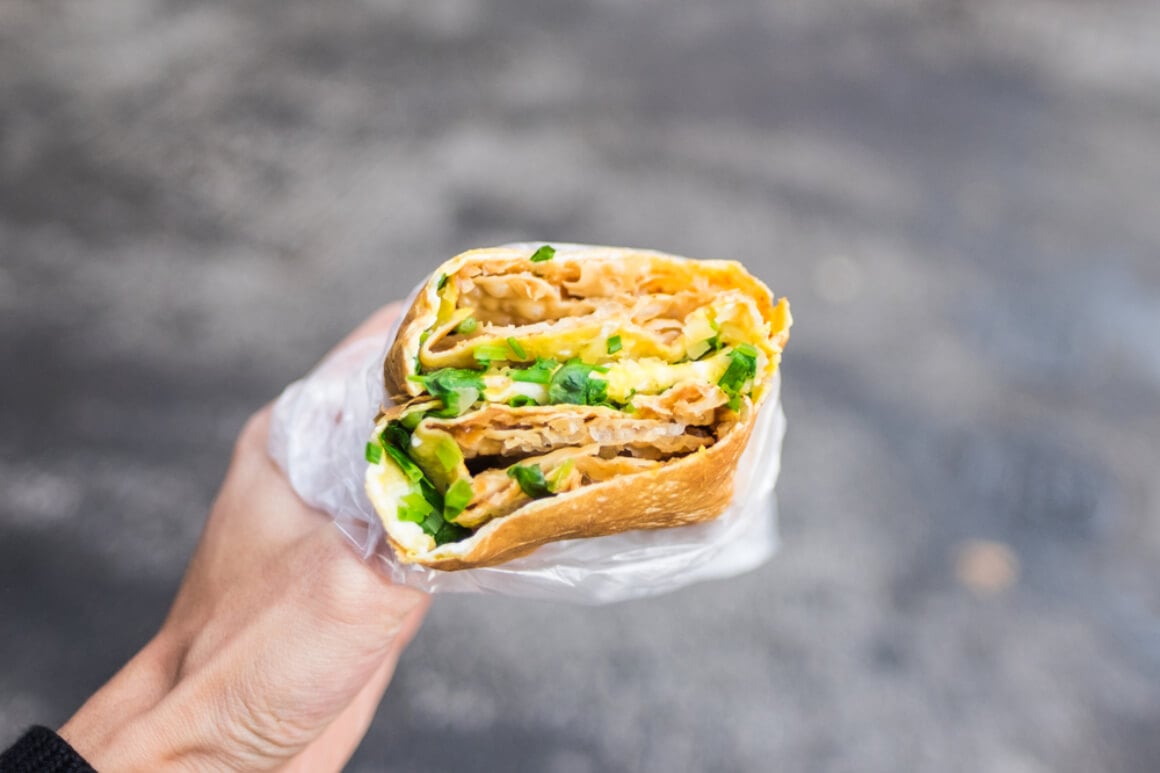
These delicious Chinese crepes are one of the country’s favorite breakfast dishes. You can get Jianbing everywhere, from street corners to outside metro stations, and even at the entrances of the most famous Chinese monuments.
Whilst in the West we tend to serve our pancakes sweet, this scrumptious street food has a twist – it’s spicy and savory. The dough is made from a combination of wheat and grain flour, then cooked to perfection on a hot griddle.
They put fillings like scallions, cilantro (a popular garnish and ingredient across most of China), and lettuce in the middle. A dash of chili sauce is added to give it a little kick – what a way to start the day!
2. Jiaozi
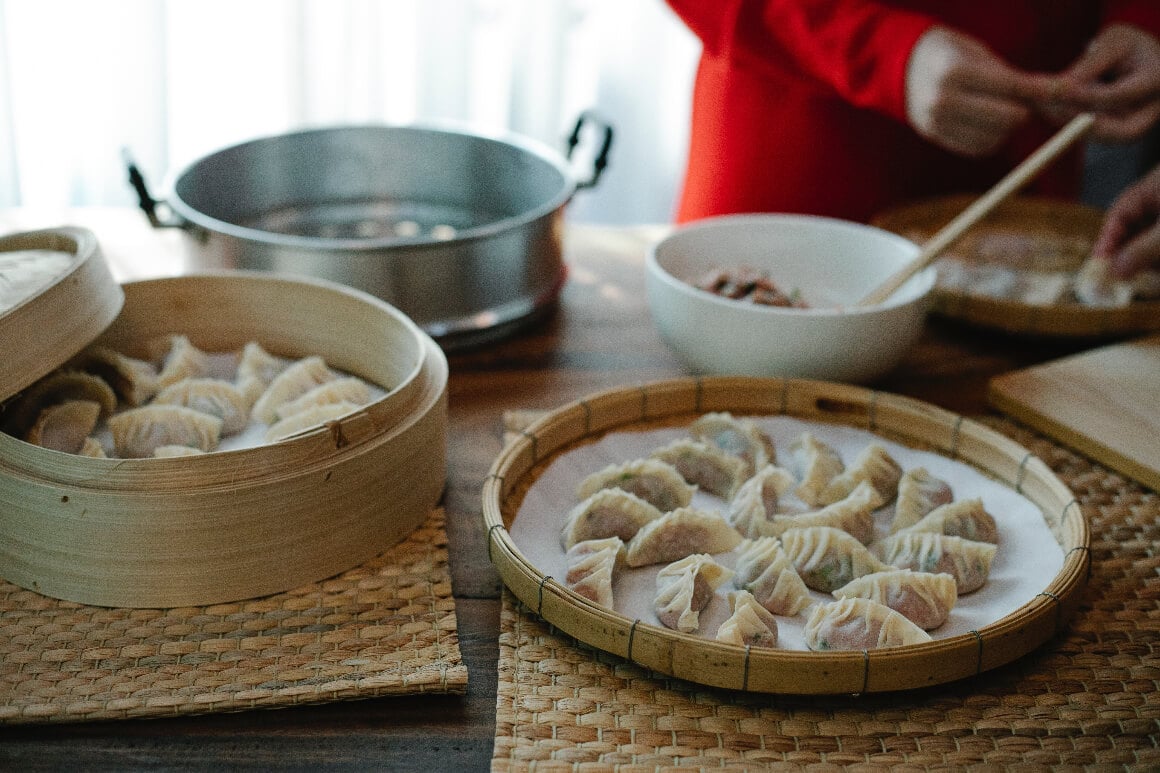
Jiaozi, or Chinese dumplings, are one of the most popular Chinese street foods. They are filled with meat, fish, or vegetables and can be enjoyed on the go! Not only are they a delight to eat, they are also believed to bring you good luck.
The Jiaozi dough is made from salt, flour, and water. The dough is then rolled out and stuffed before the dumplings are boiled. Munching on a Chinese dumpling will be a theme throughout your trip. Luckily, the flavor and fillings change based on the region you’re in, so you’ll never get bored of jiaozis!
They are served with at least one dipping sauce, like soy sauce. This fun-to-eat and much-loved snack is especially popular around Chinese New Year.
3. Baozi
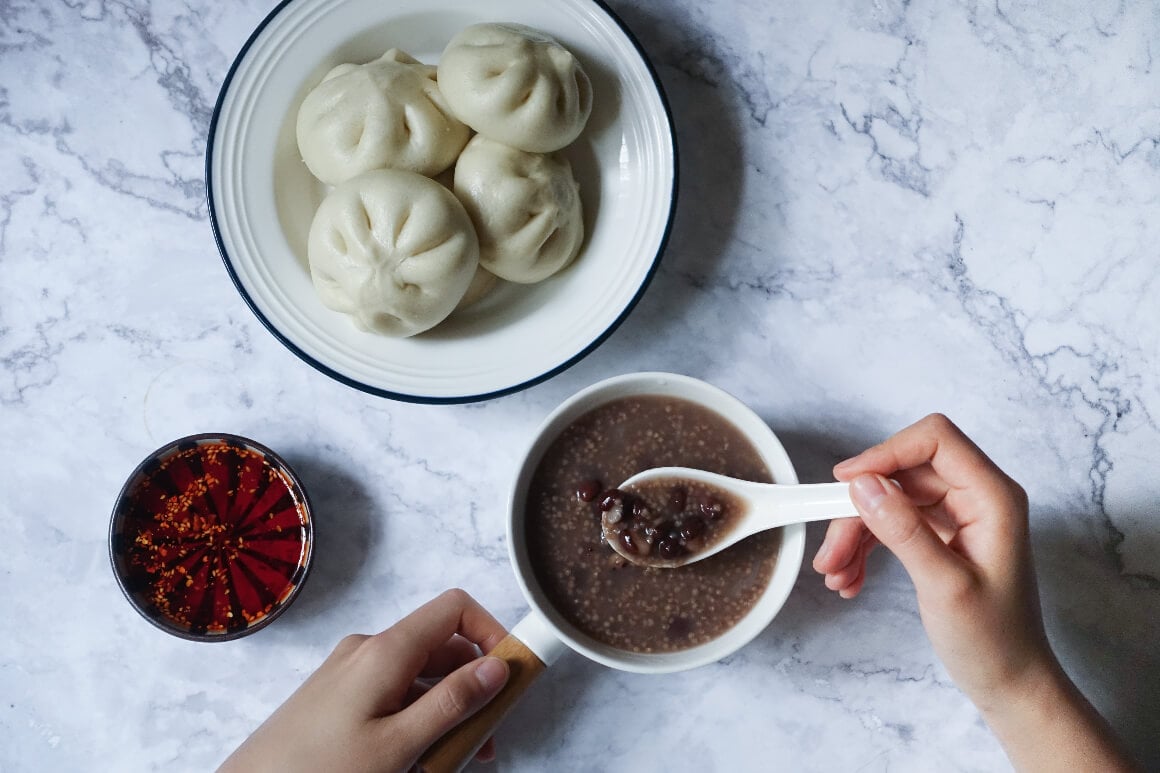
Baozi are steamed stuffed buns that are particularly popular in the north of the country. They are a street food favorite because they can be sweet or savory!
Popular fillings include barbecued pork, sweet bean paste (it sounds strange that beans can be a sweet filling, but they’re delicious!), beef, and seasonal vegetables. Walk between street vendors trying one from each and comparing their recipes.
The dough is made of flour, yeast, sugar, baking powder, and oil. The yeast makes the dough rise and gives the baozi a fluffier, more bread-like consistency than dumplings. You can often find vegetarian baozi too – so that’s a plus! Light and squidgy, they make a great breakfast food.
Want to save money on accommodation?
Enjoy 15% OFF on stays ALL around the world.
4. Xialongbao
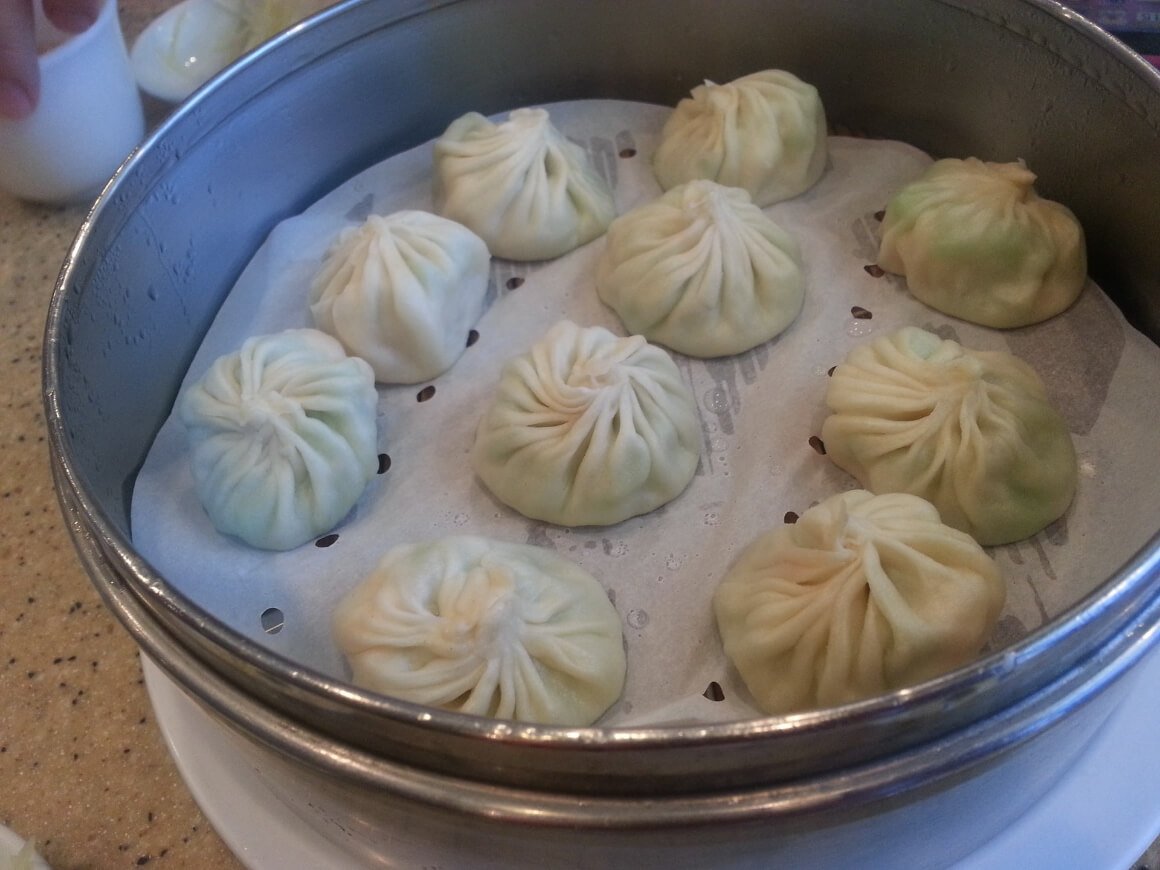
I’m sure you’re familiar with the concept of putting dumplings in a soup; well this dish does it the other way round. That’s right, this delicious street food is essentially a dumpling filled with soup.
The dumpling is filled with a hot broth that oozes out and warms your belly with each bite. Xialongbao is a popular street food in Shanghai especially. Like other dumplings, the dough is made from flour and water. Once filled, the dough is pinched at the top to stop the soup pouring out and then the dumplings are boiled.
Fillings vary from stand to stand and in accordance to the seasons, but you’ll mainly find prawns, vegetables, crab, or minced pork with a hint of ginger for seasoning stuffed into the xialongbao alongside the broth. The extra fillings give them texture and additional flavor!
5. Sichuan Mala
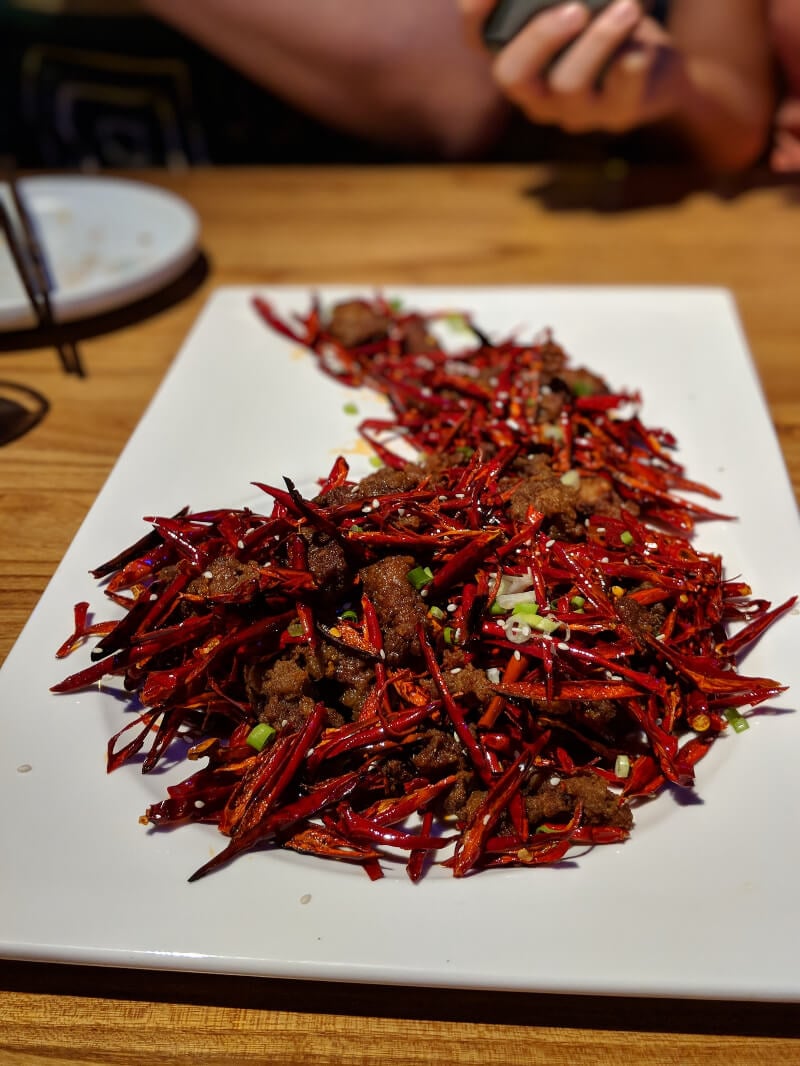
Alright, keep an open mind about this one. Sichuan mala is a spicy sauce, often added to meat dishes. In Dujiangyan, it’s common to use rabbit heads as meat. I know, it doesn’t sound very appetizing. But hey – it’s better than food waste! The rabbit heads are cooked for hours on a low heat in a spicy sauce that gives the dish its name.
If you don’t like spicy food this isn’t the street food for you! Sichuan peppercorn and chilies are the main ingredients in the mouth-numbingly hot mala seasoning that is used in this dish.
It’s not the most aesthetically pleasing dish to look at, but each bite is a cultural experience and it definitely makes it onto the list of the strangest street foods in China. It’s considered a delicacy in Sichuan, and it’s popular in Chengdu too.
I dare you to try it!
6. Lurou Huoshao
Continuing the theme of China’s strangest street foods, Lurou Huoshao is next on the menu. It’s essentially a donkey meat hot dog! It’s not eaten everywhere in China, but it is quite common in Baoding and Hejian and some parts in the northeast of the country.
It’s also common in Beijing, so make sure to add a Lurou Huoshao restaurant to your list of places to visit in Beijing.
Donkey meat has been a delicacy in China since the time of the Ming Dynasty, when men ate it more for survival than pleasure. In modern lurou huoshao the donkey meat is shredded and stewed with a mix of spices and sauces, making it juicy and unexpectedly tasty. The meat is then stuffed into a bread roll.
This weird Chinese street food isn’t one for the faint-hearted, but trying it would definitely be a tale to tell back home.
7. Pai Gu Nian Gao
This dish is a great lunch or dinner option if you’re out and about and looking for a quick but filling street food meal. Your plate will come staked with pork chops and fried rice cakes (rice cakes in China aren’t like the wafer-like ones you’re probably used to).
The pork chops are marinated and boiled beforehand with sugar, oil, and ginger to infuse the meat with a sweet taste and a slight kick of spice. This makes the meat tender and you’ll find it falls off the bone effortlessly.
The rice cakes are made by grounding down rice flour into a thick paste that is rolled into a baguette shape, thinly sliced, and then wrapped around the pork chops. It’s then fried before serving.
Hot, juicy, and sticky – this is the perfect street food choice to fill you up on the go.

We’ve tested countless backpacks over the years, but there’s one that has always been the best and remains the best buy for adventurers: the broke backpacker-approved Osprey Aether and Ariel series.
Want more deetz on why these packs are so damn perfect? Then read our comprehensive review for the inside scoop!
View on Osprey View on REI8. Cifantuan
These delicious rice balls are China’s take on pizza balls. The rice flour is made into a dough, then rolled up into a ball with all the ingredients in the middle. The dish is also known as ci faan.
There is an array of fillings that are stuffed into the rice balls, most typically pickled vegetables, pork, and youtiao which are strips of deep-fried dough made from wheat flour (you’ll have to try it to believe it).
Sometimes street vendors add sugar and sesame to their fillings to make them sweet. Cifantuan is best enjoyed as a breakfast snack with coffee! They’re easy to find in Shanghai, especially along Nanyang Lu and Xikang Lu street.
9. Hou Guo
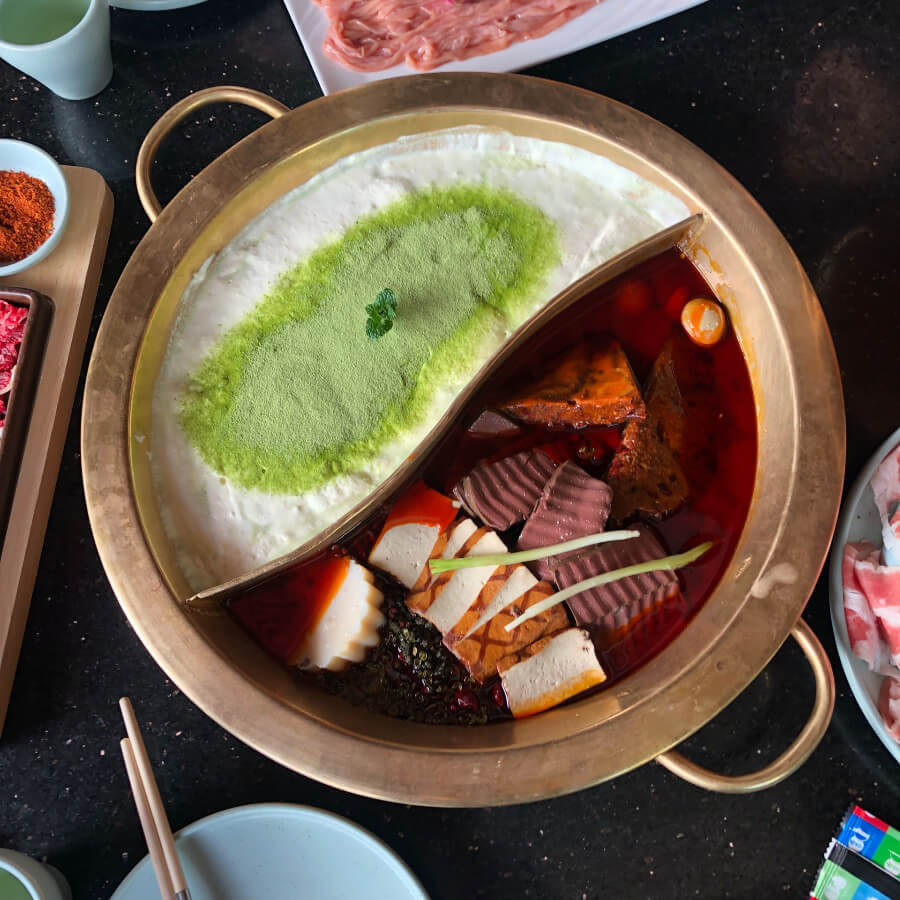
Hou guo is the Chinese word for hotpot. If you haven’t tried hotpot before, you’re in for a real treat. It was originally a regional dish unique to Sichuan, but it’s gaining popularity. The most renowned is the Chongqing ma la hotpot that has meat and Sichuan peppers in the broth.
Eating hotpot isn’t just great for filling you up, it’s also a very wholesome experience. There’s a big pot of broth in the middle (that is usually spicy and meaty), and chopped up vegetables, noodles, meat, and tofu on the side.
What you do is chuck whatever chopped ingredients take your fancy into the hot broth (that is cooking over a small fire), wait a few minutes whilst it cooks, and then dig in with your chopsticks! Of course, there is an array of condiments and sauces for dipping. Hotpots are made to be slow eating and are a great way to socialize with your nearest and dearest.
10. Chuan’r
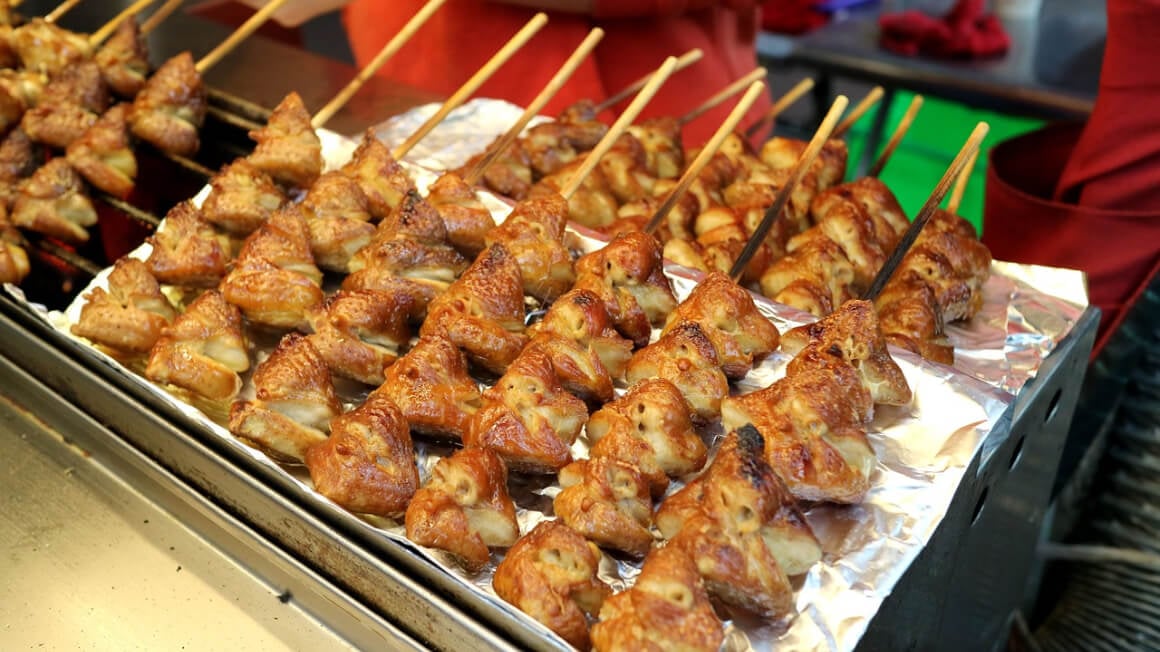
Every country has its own version of a kebab, and Chuan’r is China’s! They skewer chopped meat and vegetables onto thinly cut bamboo sticks and then sprinkle some seasoning, like salt, cumin, and chili flakes, onto them.
They then barbecue the skewers over a hot charcoal fire until they are well grilled. It’s a great snack to take with you on the go, and it’s cheap!
If you’re vegetarian or vegan you can ask the vendor to make you a vegetable-only version. You might get lucky and find they’ve got some tofu chunks they can add – yum!
Next, let’s have a look at some of the best vegetarian and vegan street food. No one has to miss out on tasty snacks and hearty meals bought at local markets and from the back of street vendors’ carts whilst they travel China! We’ve already talked about jianbing, which are great for non-meat eaters, but here are some more:
11. Tea Egg
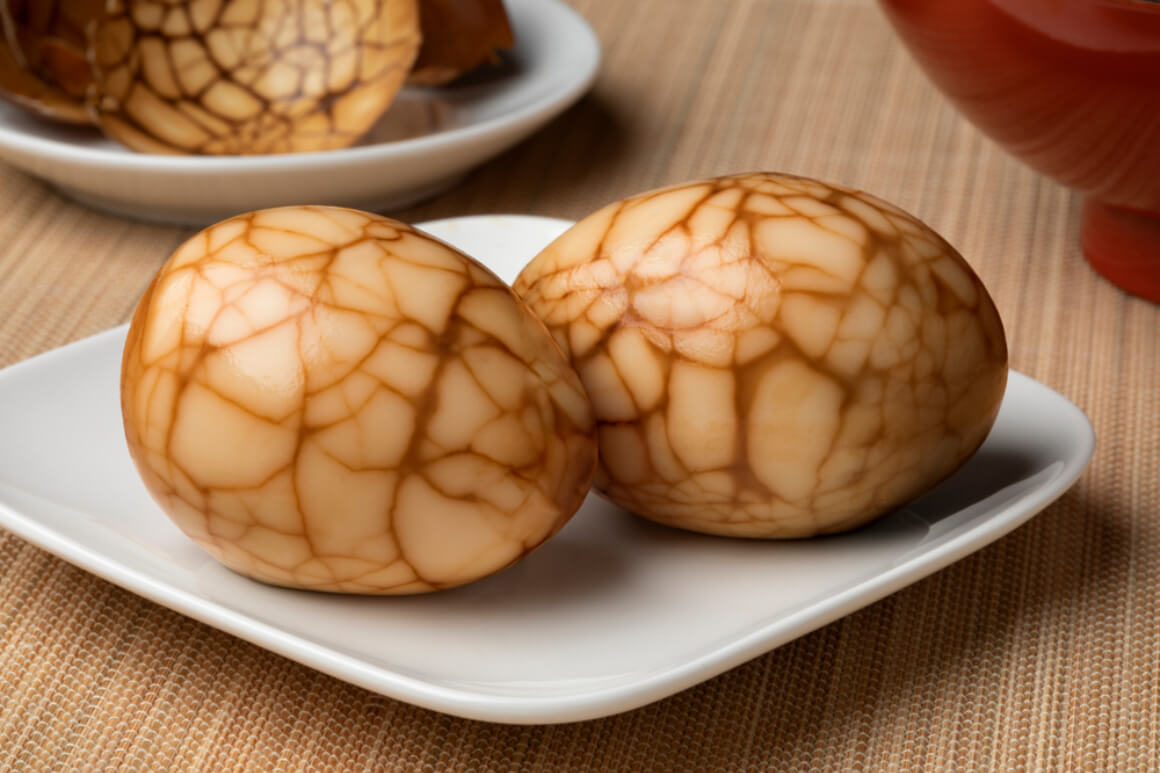
The literal translation of this Chinese dish’s name is tea leaf egg. It’s a peculiar savory dish that is sold as a snack and has a unique appearance and flavor.
Street vendors prepare tea eggs by cooking up a batch of hard boiled eggs, then cracking them slightly and putting them in a big pan filled with tea to be boiled again, infusing the eggs with flavor. Soy sauce and spices are often added to the mix!
The tea seeps through the cracks in the eggs shell and leaves a marble-like pattern on the egg white. Light and tasty, tea eggs are rich in protein too – the perfect snack.
This is a really popular snack in Hong Kong and in the Guangdong region. Make sure to add finding a tea egg to your list of things to do in Guangzhou.
12. Zong Zi
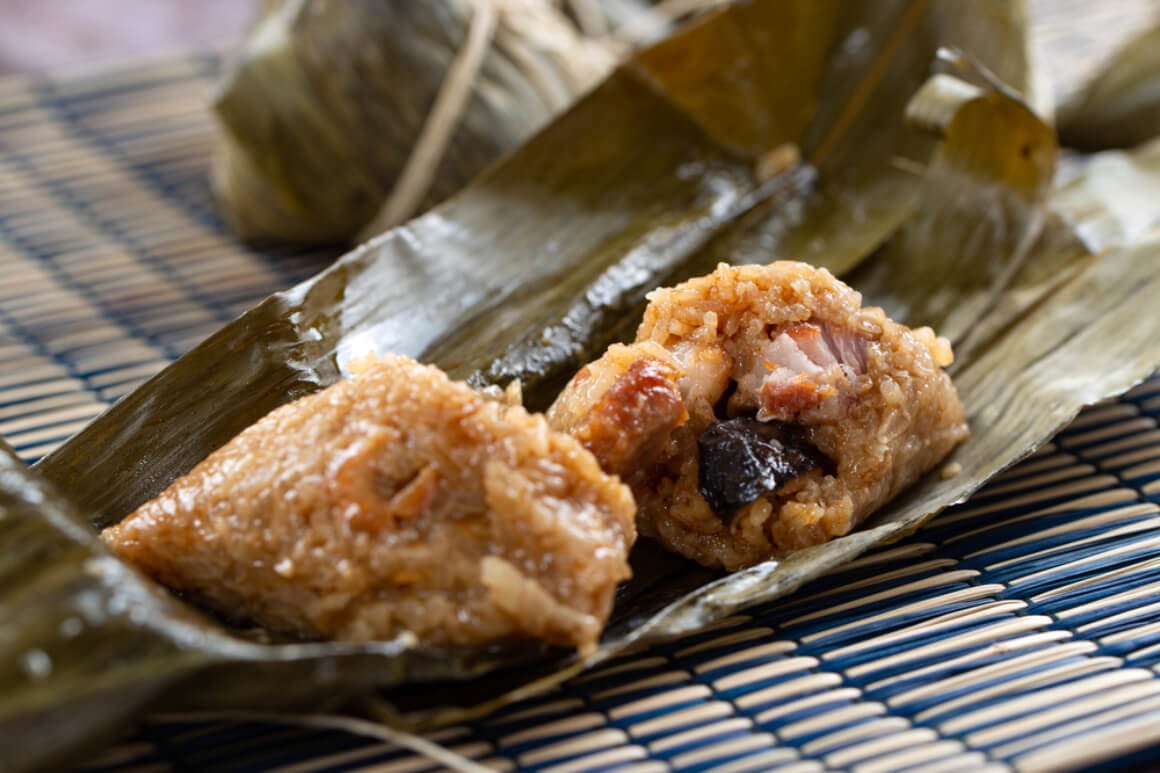
Exotic and filling, this dish is a vegetarian dream. Bamboo leaves are stuffed with sticky rice and seasonal fillings and then wrapped tightly into triangular parcels. They are available year-round, but they are most popular during the Dragon Boat Festival!
They come with various fillings and they can be sweet or savory. Some of the tastiest ingredients you’ll find in zongzi are beans, mushrooms, or dates for a sweet twist. This dish is a great light lunch.

Our GREATEST Travel Secrets…
Pop your email here & get the original Broke Backpacker Bible for FREE.
13. Mala Tofu
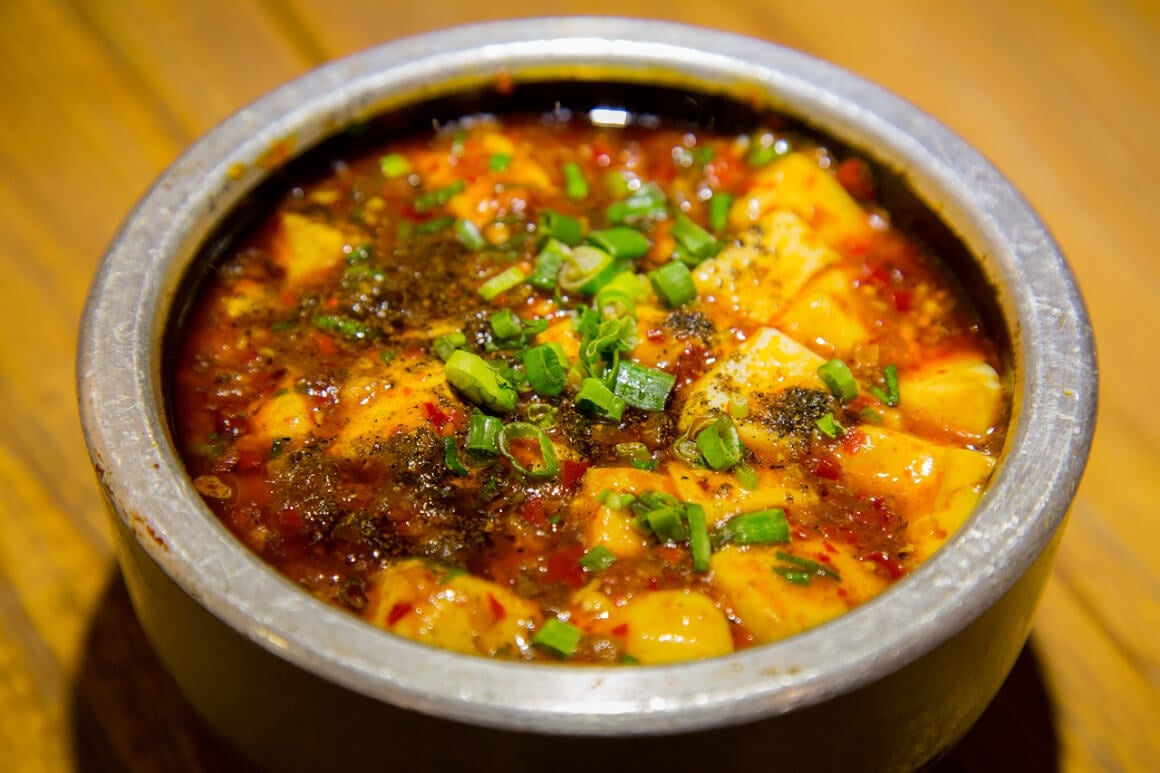
Now, let’s talk about tofu! Tofu is loved by everyone in China, vegan and vegetarian or not. It’s added to soups, stir-fries and noodle dishes, or enjoyed straight off the grill.
This yummy tofu dish is originally from Sichuan, and it’s sure to impress. Large chunks of tofu are marinated and fried up with spices, including lots of chili and hot Sichuan peppercorns.
Don’t confuse it with mapo tofu, which is mixed with ground pork! Always double-check you’re getting the veggie option before digging in.
14. Chou Doufu
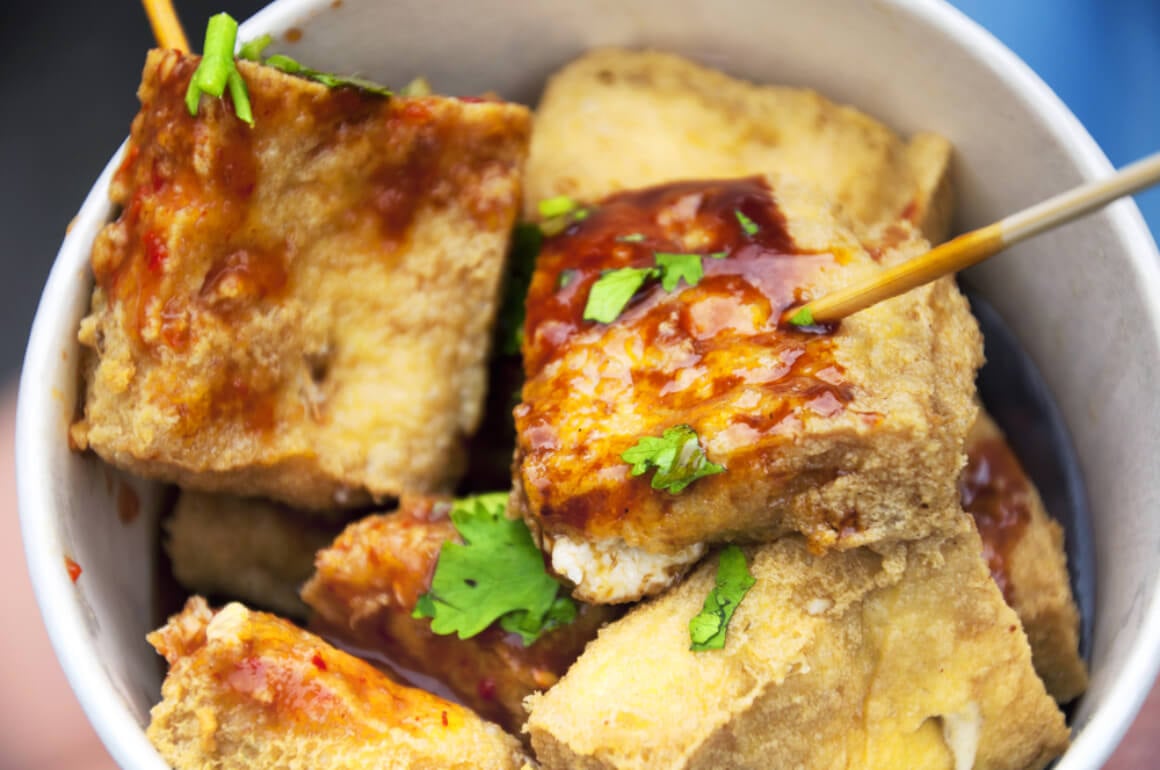
This dish is called chou doufu, which means stinky tofu! Apparently the stronger the smell, the better the taste. It’s a popular street stall snack that varies from region to region.
The tofu is fermented, that’s why it smells so strong! It’s deep fried and served with chili sauces and chopped herbs on the top.
Moving on, it’s time for dessert! China isn’t huge on desserts and after dinner, people tend to just have a piece of fruit. But there are some Chinese desserts around, such as red bean soup, sweet white lotus seed soup, or steam papaya soup, that are served every so often as a special treat on a hot summer’s night.
15. Bing Tanghulu
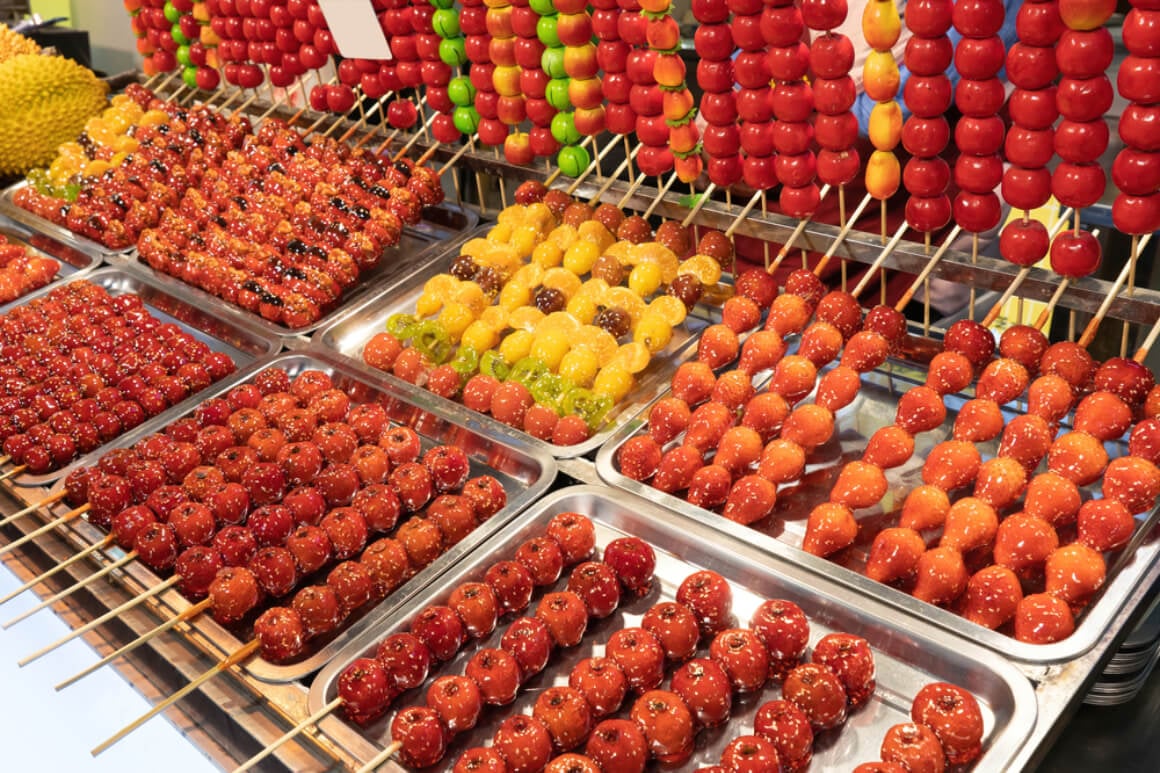
These sweet and sour candied hawthorns are a unique street food you won’t come across outside of China. There’s a nice balance of flavors and textures thanks to the hard sugar coating on the outside, and the softer more sour fruit on the inside.
They are sold on long, thin skewers that are lined with sugared hawthorns and look rather pretty! It isn’t uncommon for other fruits, like apples and strawberries, to be candied and presented in the same way – but hawthorns are a national favorite!
This sweet treat is easy to find in central Beijing.
Final Thoughts on Chinese Street Food
As you can see, Chinese street food caters for a diverse set of palates and dietary preferences. Food is high on people’s priority list in China, and that makes each dish unique, healthy, and scrumptious.
Whatever region of China you’re in, you’re going to enjoy a selection of regional and nationally renowned street foods. Make the most of your time in China and eat at local stalls and markets as much as you can, that’s where the best food is.
The best part? It’s as delicious as a gourmet meal but as cheap as chips!
Buy Us a Coffee!
A couple of you lovely readers suggested we set up a tip jar for direct support as an alternative to booking through our links. So we created one!
You can now buy The Broke Backpacker a coffee. If you like and use our content to plan your trips, it’s a much appreciated way to show appreciation 🙂




